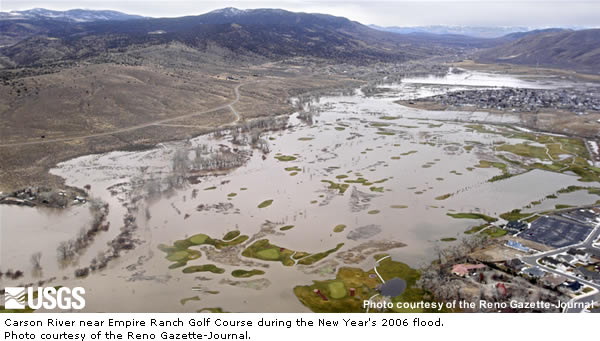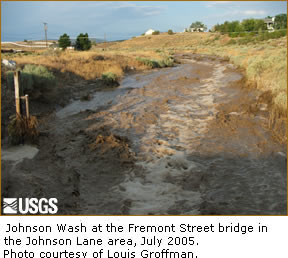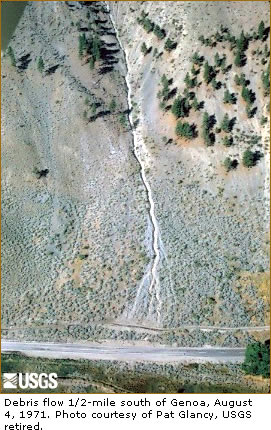Types of Floods
Three main types of flooding are documented in this web site:
Main Stem
Flooding of the main channel of a river involves flows that overbank and flood adjacent areas known as floodplains. A floodplain is generally described as a strip of relatively smooth land bordering a river that overflows at time of high water. Specific geomorphic features define a floodplain. For example, the Carson Valley is broad and flat due to the uplift and subsequent erosion of the Sierra Nevada, Carson, and Pine Nut Ranges as well as deposition of sediment carried by the Carson River at flood stage. Likewise, the Carson River channel looks more like a creek bed rather than a deep incised channel found in larger rivers across the Nation. Because the source of most of the streamflow originates from the mountain snowpack, the Carson River has not needed to incise its channel to accommodate snowmelt runoff but simply uses the floodplain as a discharge surface.

Alluvial Fan
Alluvial-fan flooding occurs on alluvial-fan surfaces adjacent to the mountain block which are gently sloping, fan-shaped landforms created over time by deposition of eroded sediment, and are common at the base of mountain ranges in arid and semiarid regions such as much of the western United States (National Research Council, 1996). Flooding on alluvial fans is characterized by high-velocity flows, active processes of erosion, sediment transport and deposition, and unpredictable flow paths. This type of flooding is the result of intense cloudbursts from summer convective storms — common in Nevada.

Debris Flows/Mudflows
Unlike water flows where suspended sediment is insufficient to affect how water behaves, debris flows are characterized by a mixture of sediment and water where the flow becomes slurry similar to wet concrete. In steep canyons, debris flows can achieve high velocities (the rate of flow), transport large boulders in suspension, and cause catastrophic damage from impact or burial.


